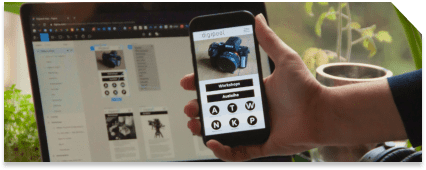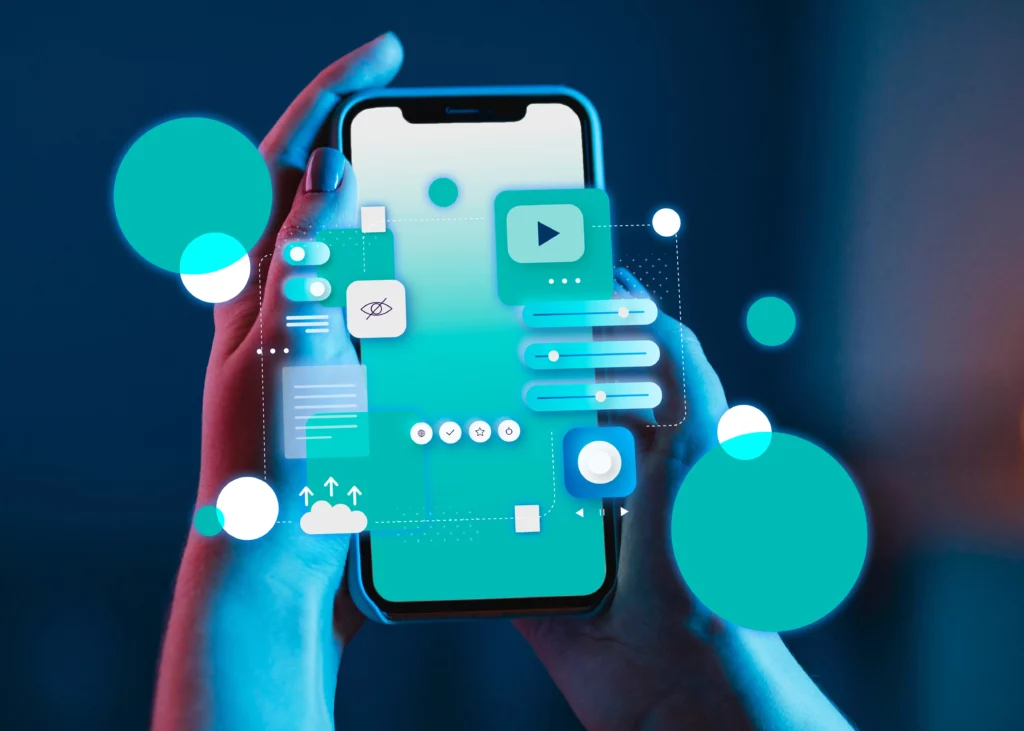May 22, 2024
Category: Apps
Don't miss the chance to work with top 1% of developers.
How To Create an Uber Like App? - A Complete Guide
Steps Involved in Uber Like App Development
1. Technical Audit & Research
First, you need to list the requirements for your Uber-like app. If you already have a taxi booking service, you'll need to build an app that aligns with your current operations. However, if you're starting from scratch, everything must be planned according to your vision. In both cases, business owners should research and identify improvements they can offer over existing taxi booking apps.
2. App Documentation
Before proceeding to app documentation, decide whether the apps will be native or hybrid and which platforms (iOS and Android) they will target. These decisions are crucial as they dictate the entire course of app development. Once these questions are answered and requirements are finalized, the next step is to list the technical specifications, architecture, and tech stack that will be used.
3. Building a Taxi-Booking Mobile App
Development can start either from scratch or using a ready-made solution. In either case, the project involves a series of operations further divided into smaller tasks. These tasks are then prioritized and completed accordingly. Unit testing is performed throughout the process to identify and resolve any logical errors.
4. Deploying the App
Once the app is built, it is deployed to live environments for functionality checks and performance testing on various devices. Any issues are promptly resolved to prepare the app for market launch.
These are the key stages of developing a taxi booking app. To put things into perspective, it’s worth examining how Uber, the pioneering on-demand ride-booking service, operates and how it has disrupted the taxi industry.
Want to move your taxi business online? Create an Uber-like app and make it happen
How Uber Works?
Step 1: Download and Sign Up
2. Sign up to be a rider by following the in-app prompts.
Step 2: Set Up Your Payment Method
2. No cash is exchanged** between you and the driver; payments are automatically processed through the app.
How to Request a Trip
1. Open the Uber app on your mobile device.
2. Enter your destination in the “Where to?” box.
3. Choose a ride mode from the options available (e.g., UberX, Comfort, Exec, UberXL, etc.). Fare estimates and the number of passengers each can accommodate will be shown.
4. Select your payment method located below the ride modes. The default option will be pre-selected, but you can change it by tapping on it.
5. Confirm your ride by tapping “Confirm UberX” (or the ride mode you selected).
6. Confirm your pickup spot. Ensure your phone’s location is accurate, then press “Confirm Pickup”.
During the Ride
2. Track your driver: Once a match is found, you’ll see the driver’s ETA and can watch their approach on a map. You’ll also see the driver’s name, license plate, photo, rating, and a temporary contact number.
Canceling a Trip
Following Your Trip
2. Share your ETA: Tap “Send Status” to share your ETA with contacts in real-time.
3. Payment processing: Once you arrive at your destination, the driver will mark the trip as complete, and the payment will be processed automatically.
Post-Trip
1. Review your trip history: Tap the three lines in the top right of the Uber app and select “Your Trips” to view past trips.
2. Rate your driver: After the trip, rate your driver from one to five stars. This rating affects the driver’s overall rating.
3. Add a tip and compliment: You can also tip your driver and choose a pre-set complement, such as “Excellent Service”.
By following these steps, you can seamlessly navigate the Uber app, request rides, track your driver, and manage payments and reviews.
How Uber Makes Money?
Uber operates on a commission-based model, charging a 20-25% fee on all fares for the use of its brand and services. The exact percentage varies based on geography and vehicle class.
Revenue as Commissions and Other Fees
Time The duration of the ride.
Distance: The distance traveled during the trip (excluding the distance to pick up the rider).
Booking fee: A flat fee to cover administrative costs (e.g., background checks, overhead). This fee goes directly to Uber.
Surge variable: During high demand, a price multiplier increases the fare.
Tipping: Optional gratuity provided by the rider.
Dynamic Pricing Explained
Dynamic pricing adjusts the price based on demand and supply, inventory, competition, locality, and other market conditions in real-time. It operates on markup economics, where increased demand allows for higher prices.
For instance, if demand doubles, the price could increase by a multiple (e.g., 2x). A ride that normally costs $10 might cost $20 during peak times. This system helps Uber manage its inventory by attracting more drivers to high-demand areas, increasing their earnings per trip and boosting Uber’s profits.
Promotional Partnerships
These partnerships benefit all parties:
Customers: Receive perks from marketing campaigns (e.g., free rides in the BMW 7 Series).
Uber: Gains additional revenue.
Brands: Access Uber’s extensive audience.
Through these models, Uber has created a distinctive and profitable approach to ride-hailing, leveraging dynamic pricing and strategic partnerships to maximize its revenue.
Basic Features of Rider’s App Of Uber Like App Development
1. Geolocation and Routing
Geolocation is a fundamental feature in any taxi booking app like Uber. The ride-booking process heavily relies on accurately identifying the user’s location using GPS technology. While the rider simply drops a pin on the map to find nearby drivers, a lot of complex processing and data-sharing occurs in the background. From the moment the app is launched until drop-off, a routing server continuously measures distances and calculates routes.
2. Payment Method Integration
With the rise of online payments, integrating secure and efficient payment methods is crucial for any taxi booking app. Uber’s cashless payment system has become a standard, featuring a fare calculator that estimates ride costs based on:
- Base fare
- Cost per mile
- Cost per minute
- Safe rides fee
To ensure the security of users' financial data, the payment system should comply with PCI standards. Payment gateway providers like Braintree or Stripe, which offer PCI compliance solutions, are often used for this purpose.
3. Registration & Profile Management
User registration and profile setup are essential for understanding your user base. Many apps now allow users to register through Gmail or Facebook. Profiles typically include basic information like photo, name, and phone number. Additionally, a rating and review system helps gather user feedback, identify pain points, and improve the service.
4. Ride Cost Estimate
This feature provides riders with an estimated price for their ride based on the pick-up and drop-off locations. The app uses an algorithm to calculate the fare, which varies if the platform offers different types of vehicles for booking.
5. Schedule a Ride in Advance
Ride-scheduling is an advanced feature popularized by Uber, allowing users to book a ride anywhere from 15 minutes to 30 days in advance. This feature is beneficial for users who prefer to plan their travels ahead of time. It can be included in the initial MVP release or introduced in later updates based on user feedback.
By integrating these features, a taxi booking app can provide a seamless, efficient, and user-friendly experience, setting the foundation for success in the competitive ride-hailing market.
6. Fare Splitting
Splitting the fare isn’t a must-have feature, but it can enhance the appeal of a taxi booking app. This feature allows co-passengers or friends traveling together to divide the total ride fare among themselves, making it convenient for shared trips.
Features of Driver’s App of Uber Like App
1. Profile Management
Drivers should be able to create and manage their profiles, including adding and updating vehicle details, changing passwords or personal information, and uploading important documents like their driver's license.
2. Earnings
An Earnings panel provides drivers with information about their income. The app should allow drivers to filter earnings data by daily, weekly, monthly, quarterly, or yearly periods.
3. Auto Offline When Idle
When drivers are idle, their status should automatically change from active to offline until they become active again.
4. Navigation
Drivers need access to real-time route directions to the passenger’s location. Integration with Google Maps can facilitate this, providing seamless navigation and easy location finding.
5. Cancel the Trip
Drivers should have the option to cancel a trip for valid reasons. The app can include options such as wrong address, too long distance, and other specific reasons for trip cancellation.
6. Preferred Destination Pick-ups
This feature allows drivers to pick up riders or collect items along their route, like when heading home. After entering their preferred location, drivers are matched with riders searching for a ride in the same direction. Admins should set limits to prevent misuse.
7. Taxi-Hailing
Drivers can pick up riders hailing a taxi from the curbside. This feature allows drivers to earn extra money and ensures the app captures additional revenue.
8. Limited Working Hours
To ensure the safety of drivers and passengers, the app should enforce limited working hours. For example, setting a 10-hour work limit after which drivers are automatically signed out for 8 hours. After this rest period, drivers can sign back in or be automatically signed in.
9. Daily Summary Report
A daily summary report helps drivers review their workday, offering insights to improve future earnings. Reports can include information such as working hours, earnings, distance covered, total trips, and tips.
Want to build your own Uber Like App?
How Much Does It Cost To Create An Uber Like App?
1. Features
The number and complexity of features directly affect the overall cost of the app. Typically, development begins with a Minimum Viable Product (MVP), which includes the essential features for passenger, driver, and admin apps. For example, the initial version of Uber focused solely on connecting drivers with passengers and facilitating in-app payments, without any advanced features like gamification or cost splitting. The MVP approach helps validate the idea and gather early user feedback, which can be used for subsequent improvements and feature additions.
2. Business Type
The current state of a business significantly influences the type of app solution needed. An established taxi service might require a sophisticated app that integrates with its existing operations, necessitating a substantial investment. Conversely, a startup might opt for a simpler app with limited features to test the market and attract initial users, resulting in a lower development cost.
3. Choice of Platform
Deciding whether to develop for iOS, Android, or both can impact costs. Businesses with limited budgets might start with an MVP on a single platform to gather user feedback. For example, Uber initially launched on iOS due to its popularity in the Western market. However, developing for both platforms from the outset can provide broader coverage if the budget allows.
4. Technology
The choice between hybrid and native development also affects cost. Native development is more common and preferred due to better performance and user experience, while hybrid development, which uses different programming languages and architecture, is chosen less frequently and typically for specific purposes.
- North America: $60-250 per hour
- United Kingdom: $60-150 per hour
- Western Europe: $40-120 per hour
- Eastern Europe: $20-100 per hour
- India: $10-80 per hour











.webp)

